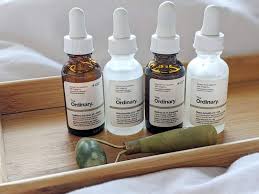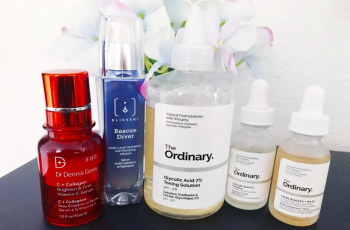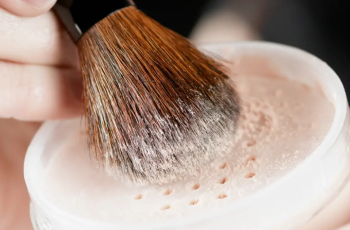
Can You Use Lactic Acid and Niacinamide Together?
Lactic acid and niacinamide—two skincare heavyweights—are well-known for their ability to tackle fine lines, wrinkles, and a dull complexion. But can you use them together in your routine?
Or is it better to avoid combining them?
Don’t worry, we’ll clear up all your questions in this blog post. By the end, you’ll know exactly how to incorporate these two ingredients into your skincare routine.
If you have any more questions, don’t hesitate to reach out via Procoal’s Instagram—I’ll be there!
What is Lactic Acid?
Lactic acid is one of the lesser-known alpha hydroxy acids (AHAs), often overshadowed by more popular acids like glycolic acid.
It’s naturally derived from soured milk and fruit sugars, making it a gentle yet effective exfoliant.
Lactic acid has a larger molecular size compared to other AHAs, which means it works on the outer layers of the skin. This gives it a mild exfoliating effect without causing excessive irritation.
By removing dead skin cells, lactic acid helps to clear clogged pores and reduce congestion.
In addition to its exfoliating benefits, lactic acid is a humectant, meaning it helps the skin retain moisture.
This is a crucial factor in protecting the skin from environmental aggressors like pollution and UV rays.
By improving your skin’s natural moisture factor, lactic acid helps keep the skin hydrated and better able to protect itself.
If you want to dive deeper into how lactic acid works, check out our detailed blog post dedicated to this clever exfoliant!
What is Niacinamide?
Niacinamide, also known as Vitamin B3, is one of the most versatile ingredients you can include in your skincare routine.
It helps to lock moisture into the skin, making it an excellent option for all skin types, especially dry or dehydrated skin.
One of the key benefits of niacinamide is its ability to minimize pores and target hyperpigmentation, such as dark spots and acne scars.
It works by strengthening the skin’s lipid barrier, which helps to retain moisture and protect against environmental stressors.
Moreover, niacinamide helps regulate sebum production, making it a great addition to routines for oily or combination skin.
It’s a gentle yet effective way to improve overall skin texture and tone, and it’s suitable for even sensitive skin.
For more information on niacinamide, head over to The Beauty Insiders where we have a full guide on its benefits and how to incorporate it into your routine.
Does Niacinamide Go Before Lactic Acid?
Yes, niacinamide should be applied after lactic acid. Here’s why: Lactic acid is an exfoliant with a low pH (more acidic), allowing it to penetrate the skin’s surface and break down dead skin cells.
On the other hand, niacinamide has a higher pH and works more on the surface to enhance the skin’s barrier and hydration.
Because of their differing pH levels, applying niacinamide after lactic acid ensures that each ingredient can do its job without interference.
If you apply niacinamide first, it can alter the effectiveness of lactic acid, as niacinamide’s higher pH can neutralize the acidity of lactic acid.
How to Apply Lactic Acid and Niacinamide Together
To avoid irritation and ensure both ingredients can do their best work, here are a few simple guidelines:
Apply Lactic Acid First: Use lactic acid as your exfoliant. Apply it directly after cleansing, allowing it to absorb for a few minutes.
Wait 10–15 Minutes: Since lactic acid has a lower pH, it takes a little time to settle and balance your skin’s pH.
Giving your skin 10–15 minutes to absorb lactic acid will help avoid irritation and maximize its effectiveness.
Apply Niacinamide Next: After waiting, apply niacinamide to restore moisture and maintain skin hydration. Niacinamide will lock in moisture, strengthen your skin barrier, and keep things balanced.
What Can You Not Mix with Niacinamide?
Niacinamide is one of the most compatible ingredients in skincare. It plays well with most active ingredients and can be incorporated into nearly every routine.
However, there is one ingredient you should avoid mixing with niacinamide: Vitamin C.
Both niacinamide and Vitamin C are packed with antioxidants and target similar skin concerns like pigmentation, redness, and dullness.
But when used together, they can compete, reducing the efficacy of both. That said, you can still use them in your routine; just be sure to alternate the time of day when applying them.
For example, apply Vitamin C in the morning and niacinamide at night.
For a more in-depth look at what not to mix with niacinamide, check out our blog post dedicated to this topic.
Can I Use Niacinamide Every Day?
Yes! Niacinamide is generally well-tolerated by most skin types. You can apply it twice a day—once in the morning and once at night.
In fact, niacinamide is so versatile that it can be used in nearly every skincare routine.
During cold weather, niacinamide is especially beneficial because it helps combat dryness and dehydration.
The humectant properties of niacinamide draw moisture into the skin, keeping it hydrated and plump despite the dry air and central heating.
If you’re new to niacinamide, start with a lower concentration (like 2-5%) and gradually increase the dosage as your skin adjusts.
Can I Leave Lactic Acid on Overnight?
While lactic acid is one of the gentler AHAs, it’s still an active ingredient that exfoliates the skin.
For this reason, you should not leave high-concentration lactic acid products (10% or higher) on your skin overnight. This could lead to irritation or over-exfoliation.
For optimal results, if you’re using products with 10% lactic acid or higher, leave them on for no more than 10 minutes.
This allows the acid to exfoliate and hydrate the skin without stripping away natural oils or causing irritation.
If you’re using lower concentrations, you can leave them on for longer periods, but always follow the instructions on the product label.
Can You Use Niacinamide Under the Eyes?
Absolutely! Niacinamide is gentle enough to be used under the eyes. In fact, many eye creams now contain niacinamide because of its ability to reduce dark circles, minimize puffiness, and smooth fine lines.
Niacinamide helps boost the skin’s barrier and improve elasticity, which can reduce the appearance of wrinkles around the delicate eye area.
Since the skin around the eyes is thinner and more prone to irritation, always patch-test any new products first.
If you have concerns, consider consulting with a dermatologist before using any new products under the eyes.
Is Niacinamide Better in the Morning or Night?
Niacinamide is incredibly versatile and can be used both morning and night. It’s especially beneficial in the morning because it helps hydrate, protect, and reduce redness throughout the day.
When used at night, it promotes skin repair and healing while you sleep.
Incorporating niacinamide into both your AM and PM routines will give you a noticeable improvement in skin texture, hydration, and skin barrier health.
Final Thoughts: Can You Use Lactic Acid and Niacinamide Together?
Yes, you can safely use lactic acid and niacinamide together, as long as you follow the correct order and give your skin time to absorb each ingredient.
By using lactic acid first and allowing your skin to rest for 10-15 minutes before applying niacinamide, you can enjoy the best of both worlds—gentle exfoliation and deep hydration.
As with any new skincare routine, remember to patch-test to avoid irritation. If you notice any irritation or discomfort, stop using the products and consult with a dermatologist for personalized advice.
I hope this answers all your questions about using lactic acid and niacinamide together. If you have any further inquiries, feel free to reach out to us on Instagram. Happy skincare! ✨



